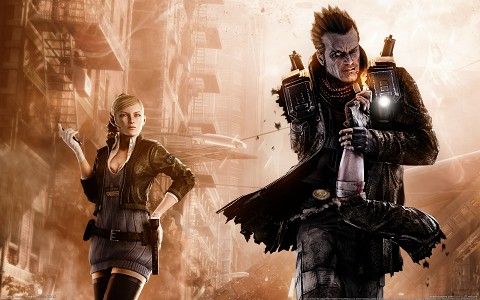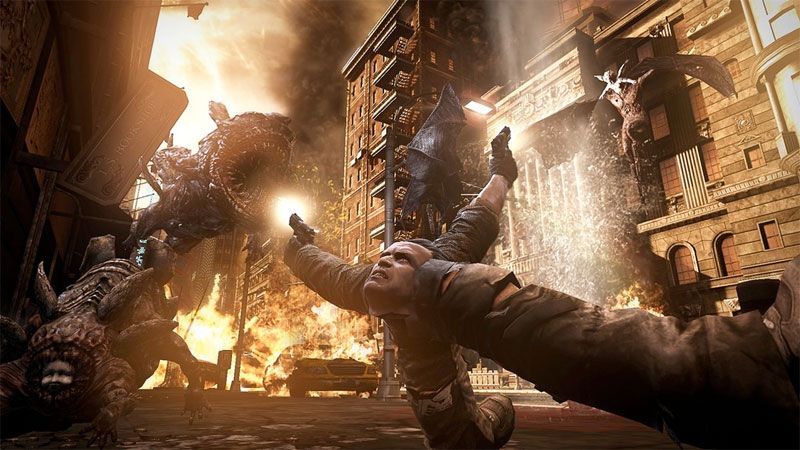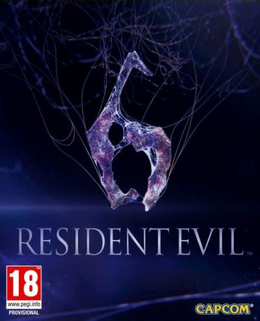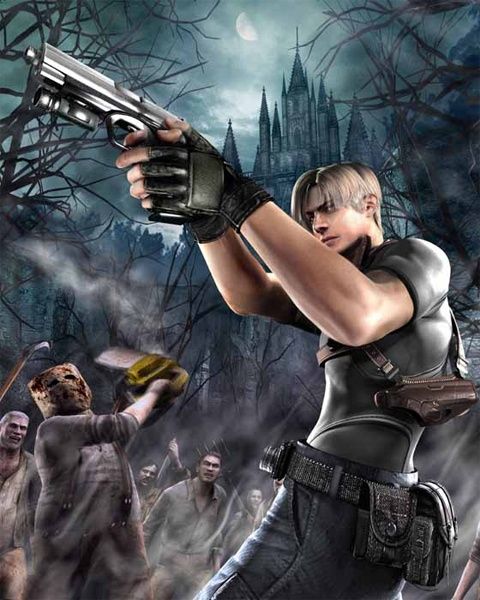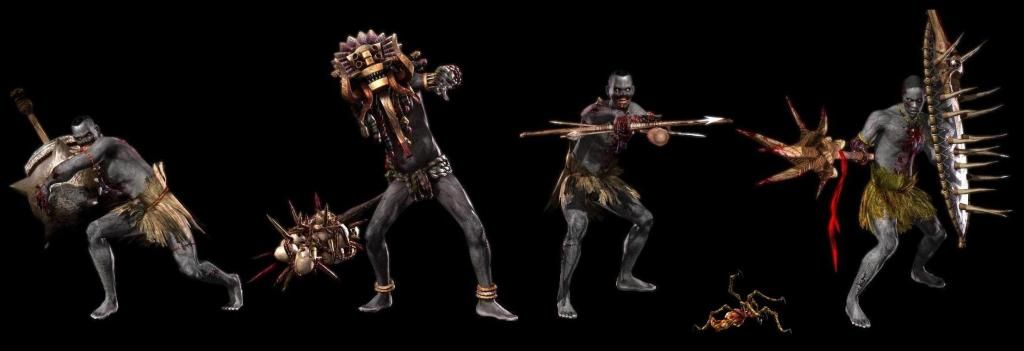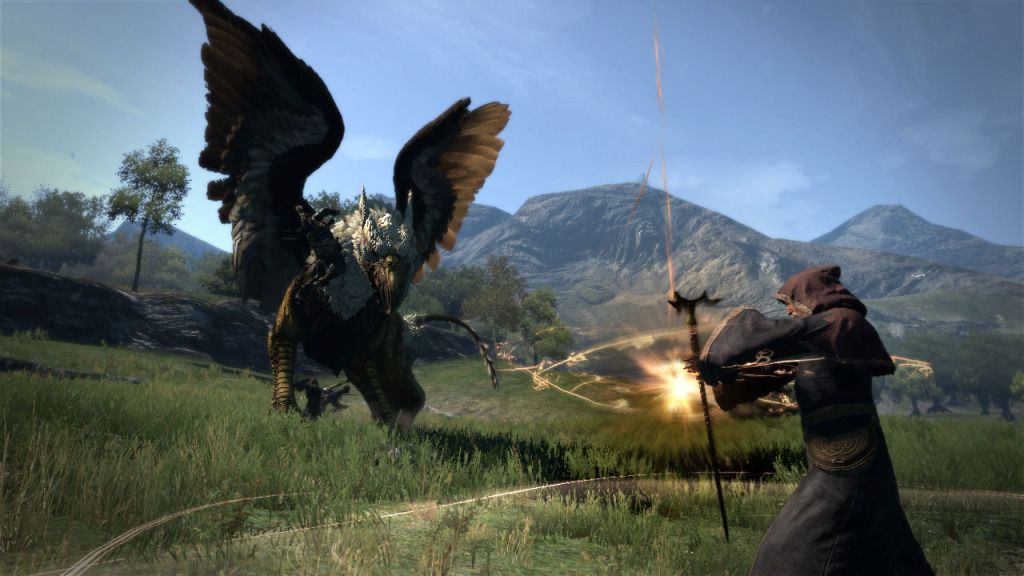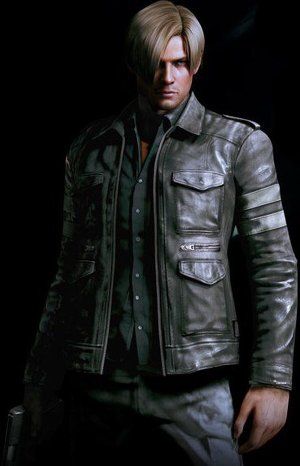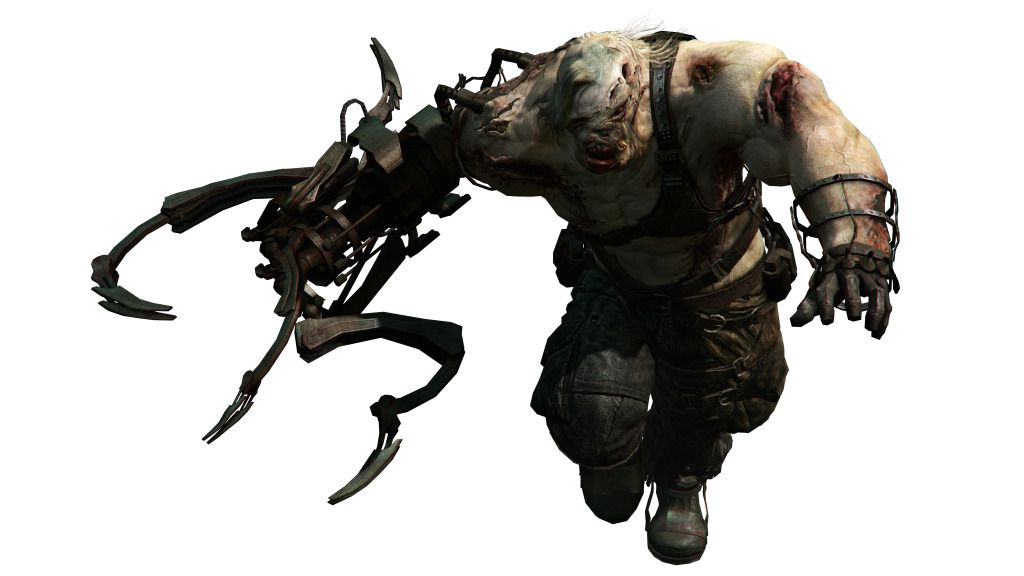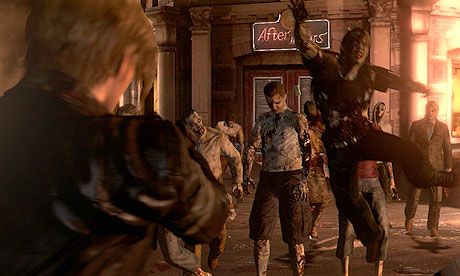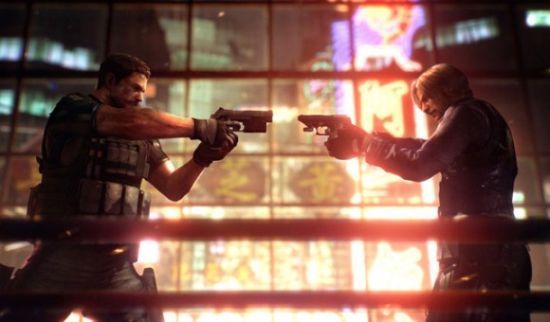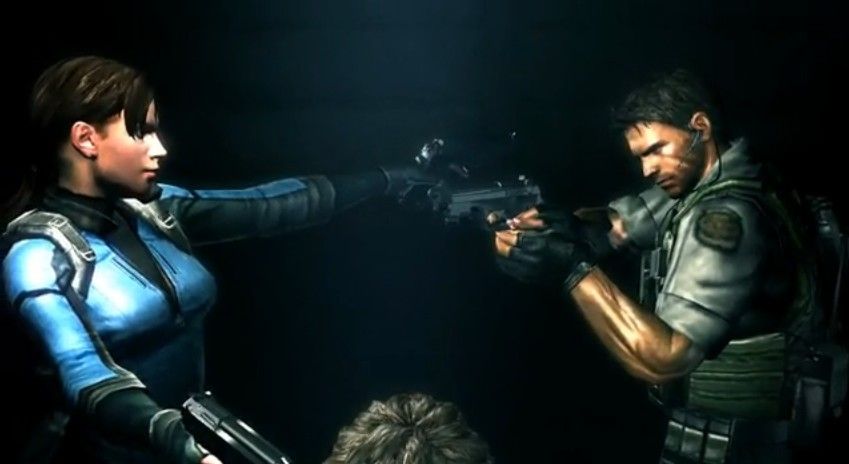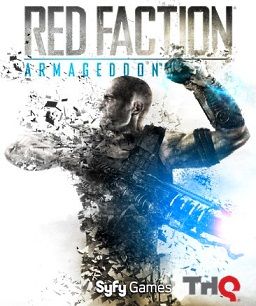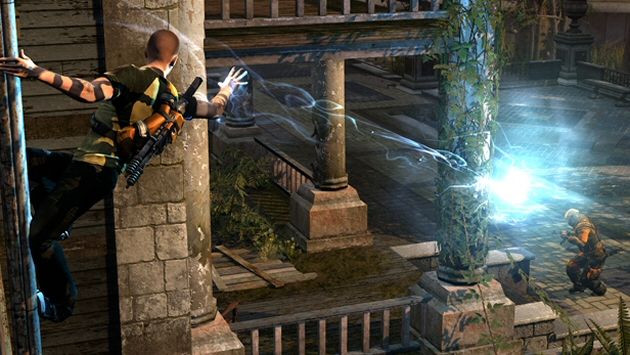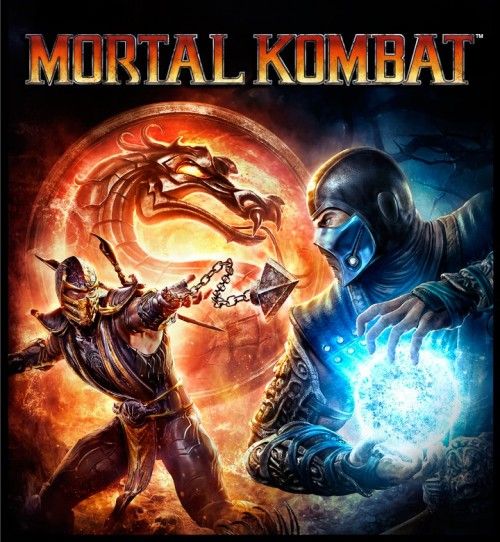"Don't drop that match!" *BOOM*
Not again. Not ANOTHER zombie game.
Once there were Mascot Platformers, desperately imitating Sonic as they ran to the right across our screens by the hundreds. Years later Tomb Raider's wake left the entire video game industry cramming in as many attractive females as possible into the limelight. Then in lieu of Call of Duty: Modern Warfare's ludicrous popularity the...modern warfare aesthetic has dominated gaming for years. The zombie horror sub-genre in gaming has been shambling along, implacable and unfettered for nearly two decades now, after the surprise hit of Capcom's Resident Evil, and it's long-term popularity in the homes of gamers is probably partly responsible for the way zombies have become ubiquitous in practically every other medium over the last ten years. You can't swing a cricket bat these days without hitting a film, book, comic or tv series that involves the walking dead, or The Walking Dead for that matter.
Some trends refuse to lay down and die.
So on XBox Live Arcade, a veritable cesspit of popularly-themed shovelware, yet ANOTHER zombie-themed game has emerged. What could possibly make State of Decay worth your time, even if you're as burned out on the entire concept of zombies as I am? Thankfully, quite a lot as it turns out.
State of Decay is an open world survival game set shortly after the cadavers rise and society collapses. Beginning in a holiday camp somewhere in North America, you soon journey about the modestly sized map in your quest to survive the post-societal world. In many ways it's very reminiscent of Capcom's Dead Rising games in the way that you make your way about the wide open environment, raiding shops and rescuing survivors from various plights so that you might earn their trust. The main draw with SoD is that you have to recruit, manage and protect your own cadre of survivors, with many events in the game world occurring on a semi-random, procedural basis, so that different playthroughs can turn out very differently.
A rare encounter with the legendary Dire Gazebo.
Hefty promises have been made of this system throughout the game's development, and it's impressive that the game's small development studio have managed to deliver on many of them. The game starts slow with only two playable characters, and gently wiens you into the mechanics of killing zombies, exploring areas and foraging for resources, and only after around half an hour of play do you get given the responsibility of guiding your own tribe from a comfortably appointed little base. From here things open up: the survivors you have need the bare essentials to survive, so you have to explore the surrounding area for food, medicine and equipment to keep everyone alive, then carry them back home. While the roles of the survivors are automatically delegated, you still need to tell them what they should build in the finite predesignated areas of the base with your finite construction materials. Will you set up a triage tent to help fight off disease and heal up the player characters who you've managed to get maimed, or a green house to set up a steady food supply? It's light on strategy, but your choices are simple to instigate and have understandable effects on the way your campaign plays out, so it's very approachable for the players who might shy away from the likes of XCOM.
Not only that, but you’ll also have survivors getting into arguments, having tantrums and raising a kerfuffle at your Home base if their personalities clash with each other, so either you’ll have to seek out a recruit with the randomly occurring “counsellor” trait, or intervene to keep people from leaving for good. It can feel at times like you're babysitting a group of adults, but such are the chains of commanding.
Social drama? With my zombies?!
In fact the system of running an organisation in such a way has been showing up in quite a few games lately, notably Assassin’s Creed and Metal Gear Solid: Peace Walker, but SoD has a few aspects which enhance the feeling that you’re part of a greater group. For example there is a fatigue system that means if you use a single character for a long period of time, they will start to suffer from exhaustion. While you can temporarily buff a character's stamina with caffeine or narcotics to stay awake, it means you eventually have to put them to bed and defer to another playable character. The game also has a system of Permanent Death in place, where any character whose health drops to zero in decisively dead for the rest of the playthrough. It can be legitimately heart-wrenching when you get careless and have a high level character you've played as for over ten hours get messily ripped to shreds, and knowing that you'll have to soldier on without them. This leads you to become more protective of your characters, and means no single character is favoured to perform superhuman feats of skill and insomnia for days on end like Ezio or Big Boss, and feels reminiscent of older games of this ilk, like Midwinter on the Amiga.
Now I get to feel really old.
While there are main campaign quests to deal with and some more detailed interactions with other factions to instigate, the game also has simple missions pop up almost constantly: Hunting for special undead, rescuing beleaguered survivors in various ways, or finding specific items to help your construction projects, these kinds of errands are thrown up for you to deal with every in game day or so. While in time they can be a bit repetitive, the general game mechanics are gratifying enough that you’ll glean much glee from making the dying world a better place, one shattered skull at a time.
The combat is simple but effective. Melee weapons are swung, instant killing blows can be made on prone or unaware enemies, and the dodge button is very generous with letting you slip past hungry mouths and grasping hands. The main point where it mechanically differs from Dead Rising and feels a little like Dark Souls is in it’s Stamina system, seeing as every strenuous exertion will bring your character closer to outright exhaustion and complete helplessness. While you might want to go in swinging your sledge hammer like a feather duster into a large horde right out of a dead sprint, it probably won’t end well for you unless you’ve taken the precaution of getting dosed up on amphetamines first. On the flip side, the only way to level up your stamina stats is to exert yourself, so sprinting yourself to exhaustion despite how vulnerable it makes you becomes a risk/reward mechanic in and of itself. In the same way, ammo might be precious, but the only way you’re going to improve a character’s abilities as a marksmen is by shooting zombies, so the choice to horde your bullets and remain untalented with firearms or expend your ammo to become more proficient is yours to make.
There’s a very impressive range of weapons, tools and items to acquire throughout the game, even if they only differ slightly from eachother. It’s quite possible to make your way through the campaign entirely and never acquire a scoped rifle, katana, thermite grenade or plentiful other goodies that are tucked away in obscure locations and random loot drops, but you won’t feel too bad as you’ll probably score your fair share of rotary grenade launchers and cavalry sabres before endgame.
Exploration of the world isn't only incentivised by acquiring rare loot or resource stockpiles; the map has some surprisingly nice details and obscure areas to explore. Among the desolation you'll occasionally find ruined plane fuselages, unique furniture or possessions in certain houses, and the occasional brief text document that will raise a smirk or a grimace. The gamesis never by any means a graphical powerhouse, but it's clear that the developers wanted to make the world feel like more than a typical post-apocalyptic backdrop.
One really criminal part of the combat gameplay and equipment system is how throwing weapons are handled. When equipped, a press of the Use button sends one flying toward the centre of the screen, with no arc indicator or ability to cook grenades. As you can imagine, this feels incredibly awkward, Especially seeing as molotovs are easily the most effective tool for dealing with most of the threats the game throws at you. It doesn’t seem like an intentional design conceit, and instead just appears to be an feature they didn’t fully iron out. That said, it’s very pleasing to lure a horde into a bottleneck and incinerating them all at once with well placed incendiary.
“I name you Bernie.”
Plot events trigger gradually as your community thrives, with your resident Woman With A Radio chiming in with messages she’s intercepted from other survivors and factions that wish to make themselves known, and many of their requests are actually skippable. Winning favour with other factions or otherwise endeavouring to keep them around does have it’s benefits however, seeing as they offer unique services that you can call in later at your discretion. You might not like one particular group of NPCs, but forsake them and you might have to go without being able to call in an armed swat team for backup or request an artillery strike for the rest of the game.
On the other hand, you can't do anything to directly antagonize other human factions, and neither can they do so to you. There is no competition over resources or aggressive antagonism with the other groups, and this seems more than a bit incongruous when characters allude to bandits robbing people, and an entire faction is committed to protecting people from this threat that simply does not exist in the game world.
The main thrust of the story however lies in your community, and one of the most important events in the game comes when you have to choose a new location to call Home. It presents probably the most interesting choice in the game, as there dozens of different locales to choose from, each with their own distinct advantages and disadvantages. It’s a shame then that the brevity of the game means this choice only really has to be made once, but subsequent play throughs and experimentation with Home sites are actually fun and add significantly to the game’s longevity.
Another important feature is how transport functions. There is no quick travel, and while cars are initially plentiful there is only a limited amount in the game world, and when they’re gone they’re gone. They can only be repaired if you build a Workshop, and even then the repair process is incredibly slow. So while every car has unlimited fuel you have to treat them with a great deal more care than you would in any other open world game if you don’t want to end up walking everywhere.
The universal currency of the game is "Influence", a numbered value that allows you to order special actions, prompt new construction projects or take equipment from stockpiles. It decreases as you perform said actions and increases as you accomplish missions, and while it's an interesting approach to how a money equivalent could work based on social standing after the economy collapses, it's still a little strange. Influence isn't owned by individual characters, and instead shared around the community via their omniscient hive mind conciousness, i.e. You. You can accomplish three missions in a row as Marcus, have him get some much deserved sleep, then have Elliot spend his sleeping friend's Influence to set up an Outpost. Your Influence works among communities you've never visited before and have no realistic way of knowing who you are or why they should let you help yourself to their Ibuprofen hoard.
Also, Influence is accrued more quickly by characters with a Leadership talent, and seeing as the first character you portray has this skill, it can lead to the player getting a massive amount of Influence early on in the game, and never particularly feeling the pinch from having less Influence than they need at any given time.
Characters have different personality descriptions and traits based on their lives and careers prior to the zombie outbreak, and these confer various effects upon the characters. Characters who have a profile that mentions they did physical activities recreationally will have better stamina for example, or might level up their fighting abilities more quickly than a librarian. Some might even have natural disadvantages, such as having a bum knee that makes it impossible for them to regenerate stamina while crouching. It's a nice idea that borrows from the Feats and Backgrounds mechanics you can find in many tabletop role playing games, but most of the differences are passive in nature, and are unlikely to hugely influence your playstyle.

It's more than possible to go through the entire game without even touching on the character customization system. While earning levels in Fighting might give you the ability to unlock a counter attack or unique kick for laying out zombies, the game doesn't intrusively prompt you to make a choice, and because of the game's surprisingly forgiving mechanics you might find yourself never needing to do so. If you do however, there are builds to be developed that allow characters to search buildings quickly without making a sound, or cleave through multiple hordes of foes without taking a single hit. It's gratifying, but without the missions increasing in difficulty to compensate for a high level character's prowess, it can cheapen the overall experience.
This is probably the biggest flaw the game has: Lack of difficulty. While due to the procedural nature of how the game world develops through your playthrough you might encounter erratic shifts in difficulty from play session to play session, on the whole the experience won't push you too far. Zombie hordes will never exceed ten at a time, very few missions will force you to marathon tasks for long periods without the chance to resupply, and only the very hardiest of the Special Zombies will put up a substantial fight. Most criminal of all is the game's lack of variable difficulty settings (Another element that makes the game similar to Assassin's Creed and Peace Walker); the game is begging for a mode where a single zombie bite is lethal or infectious, or where wounds take days to heal instead of seconds, but sadly only the standard level of challenge is available to you. If State of Decay had the same sense of scarcity, urgency and appallingly unfair random cruelty as Tokyo Jungle, it'd be practically perfect.
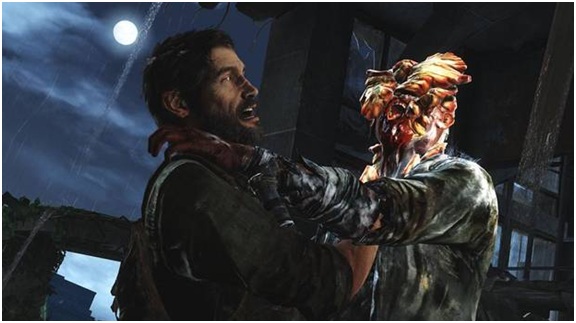
It's also got some downright comical glitches, even months after it's release. Characters, cars and creatures clip through walls and scenery with worrying frequency. The vehicle physics sometimes cause bizarre gravitational phenomena if you take a jump at a funny angle.Sometimes a house might be impossible to clear until you realise that a zombie spawned in the floor, and his head is roaming the corridors seeking toes to nibble.
Yet in the end, State of Decay is still a great game. Taken on it's own merits without expectations, there's a cheap indie game here which does right what plenty of full priced games fail to do; it gives the player a sense of atmosphere, as if they were living in the game world and taking real agency in controlling the fates of it's characters. Unlike so many ambitious projects that collapse in development hell or crash and burn on release, SoD delivers an entertaining experience that players of any skill level can glean enjoyment from, and even return to months after completion for a new campaign and a lot of fun. Plus if the PC version is found to be easily moddable, this game is begging for a Dead Rising style Overtime Mode.
Undead Labs are a development team to keep an eye on. If you were cheated by Infestation: Survivor Stories, felt that The Last of Us was too linear or you’re starting to sour on zombies all together, State of Decay might just be the medicine you need. At £15 it’s a steal.
Cheaper Options: Dead Rising (1&2), Tokyo Jungle
The main thrust of the story however lies in your community, and one of the most important events in the game comes when you have to choose a new location to call Home. It presents probably the most interesting choice in the game, as there dozens of different locales to choose from, each with their own distinct advantages and disadvantages. It’s a shame then that the brevity of the game means this choice only really has to be made once, but subsequent play throughs and experimentation with Home sites are actually fun and add significantly to the game’s longevity.
Another important feature is how transport functions. There is no quick travel, and while cars are initially plentiful there is only a limited amount in the game world, and when they’re gone they’re gone. They can only be repaired if you build a Workshop, and even then the repair process is incredibly slow. So while every car has unlimited fuel you have to treat them with a great deal more care than you would in any other open world game if you don’t want to end up walking everywhere.
The universal currency of the game is "Influence", a numbered value that allows you to order special actions, prompt new construction projects or take equipment from stockpiles. It decreases as you perform said actions and increases as you accomplish missions, and while it's an interesting approach to how a money equivalent could work based on social standing after the economy collapses, it's still a little strange. Influence isn't owned by individual characters, and instead shared around the community via their omniscient hive mind conciousness, i.e. You. You can accomplish three missions in a row as Marcus, have him get some much deserved sleep, then have Elliot spend his sleeping friend's Influence to set up an Outpost. Your Influence works among communities you've never visited before and have no realistic way of knowing who you are or why they should let you help yourself to their Ibuprofen hoard.
Also, Influence is accrued more quickly by characters with a Leadership talent, and seeing as the first character you portray has this skill, it can lead to the player getting a massive amount of Influence early on in the game, and never particularly feeling the pinch from having less Influence than they need at any given time.
Characters have different personality descriptions and traits based on their lives and careers prior to the zombie outbreak, and these confer various effects upon the characters. Characters who have a profile that mentions they did physical activities recreationally will have better stamina for example, or might level up their fighting abilities more quickly than a librarian. Some might even have natural disadvantages, such as having a bum knee that makes it impossible for them to regenerate stamina while crouching. It's a nice idea that borrows from the Feats and Backgrounds mechanics you can find in many tabletop role playing games, but most of the differences are passive in nature, and are unlikely to hugely influence your playstyle.
Every playstyle leads to excessive violence.
It's more than possible to go through the entire game without even touching on the character customization system. While earning levels in Fighting might give you the ability to unlock a counter attack or unique kick for laying out zombies, the game doesn't intrusively prompt you to make a choice, and because of the game's surprisingly forgiving mechanics you might find yourself never needing to do so. If you do however, there are builds to be developed that allow characters to search buildings quickly without making a sound, or cleave through multiple hordes of foes without taking a single hit. It's gratifying, but without the missions increasing in difficulty to compensate for a high level character's prowess, it can cheapen the overall experience.
This is probably the biggest flaw the game has: Lack of difficulty. While due to the procedural nature of how the game world develops through your playthrough you might encounter erratic shifts in difficulty from play session to play session, on the whole the experience won't push you too far. Zombie hordes will never exceed ten at a time, very few missions will force you to marathon tasks for long periods without the chance to resupply, and only the very hardiest of the Special Zombies will put up a substantial fight. Most criminal of all is the game's lack of variable difficulty settings (Another element that makes the game similar to Assassin's Creed and Peace Walker); the game is begging for a mode where a single zombie bite is lethal or infectious, or where wounds take days to heal instead of seconds, but sadly only the standard level of challenge is available to you. If State of Decay had the same sense of scarcity, urgency and appallingly unfair random cruelty as Tokyo Jungle, it'd be practically perfect.
Say what you will about The Last of Us, it does have multiple difficulty settings.
It's also got some downright comical glitches, even months after it's release. Characters, cars and creatures clip through walls and scenery with worrying frequency. The vehicle physics sometimes cause bizarre gravitational phenomena if you take a jump at a funny angle.Sometimes a house might be impossible to clear until you realise that a zombie spawned in the floor, and his head is roaming the corridors seeking toes to nibble.
Yet in the end, State of Decay is still a great game. Taken on it's own merits without expectations, there's a cheap indie game here which does right what plenty of full priced games fail to do; it gives the player a sense of atmosphere, as if they were living in the game world and taking real agency in controlling the fates of it's characters. Unlike so many ambitious projects that collapse in development hell or crash and burn on release, SoD delivers an entertaining experience that players of any skill level can glean enjoyment from, and even return to months after completion for a new campaign and a lot of fun. Plus if the PC version is found to be easily moddable, this game is begging for a Dead Rising style Overtime Mode.
Undead Labs are a development team to keep an eye on. If you were cheated by Infestation: Survivor Stories, felt that The Last of Us was too linear or you’re starting to sour on zombies all together, State of Decay might just be the medicine you need. At £15 it’s a steal.
Cheaper Options: Dead Rising (1&2), Tokyo Jungle


